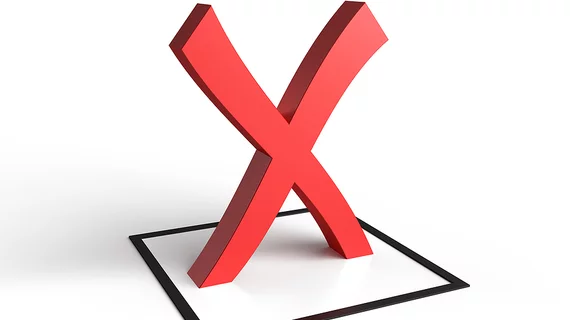Imaging appointment no-shows due to modality type, scheduling lead time
Missing an imaging appointment can delay diagnosis, while medical providers lose revenue and opportunities to see more patients, according to a study published May 11 in the Journal of the American College of Radiology.
For the largest retrospective analysis to examine multiple imaging modalities and variables related to patient no-show behavior in radiology, lead author Puneet Bhargava, MD, and colleague analyzed 2.9 million outpatient imaging examinations over 16 years (2000 to 2015) at the University of Washington for no-show visits in radiography, computed tomography (CT), mammography, MRI, ultrasound and nuclear medicine.
Potential variables contributing to a no-show included imaging modality, patient age, appointment time, day of the week and scheduling lead time, the researchers wrote.
Out of 2,893,626 patient visits, researchers found 94,096 no-shows. These missed appointments declined from 3.36 percent in 2000 to 2.26 percent in 2015. Contributing variables over the 16-year period included modality type and scheduling lead time, according to the researchers.
Mammography had the highest modality no-show visit rate of 6.99 percent, according to the researchers, and radiography had the lowest rate of 1.25 percent.
"High rates of no-shows in mammography may be due to it its nature as a screening examination and may be further complicated by patient discomfort during the examination, beliefs about the disease or the examination, and differing society screening guidelines," the researchers wrote. "Understanding these modality-specific trends can help improve scheduling and operations planning and may also encourage the deployment of different patient reminder strategies, depending on the type of examination."
A scheduling lead time greater than six months increased the odds of a no-show when compared to a lead time of one week. Other predictive factors included patients who were older than 60 or if the appointment was scheduled on a Monday or Saturday, the researchers wrote.
Reducing the number of no-shows for imaging appointments requires further study into socioeconomic and demographic factors of patients, including travel time and insurance status, as well as building predictive models to remind patients of their appointments or offer the option to cancel ahead of time, if necessary.

